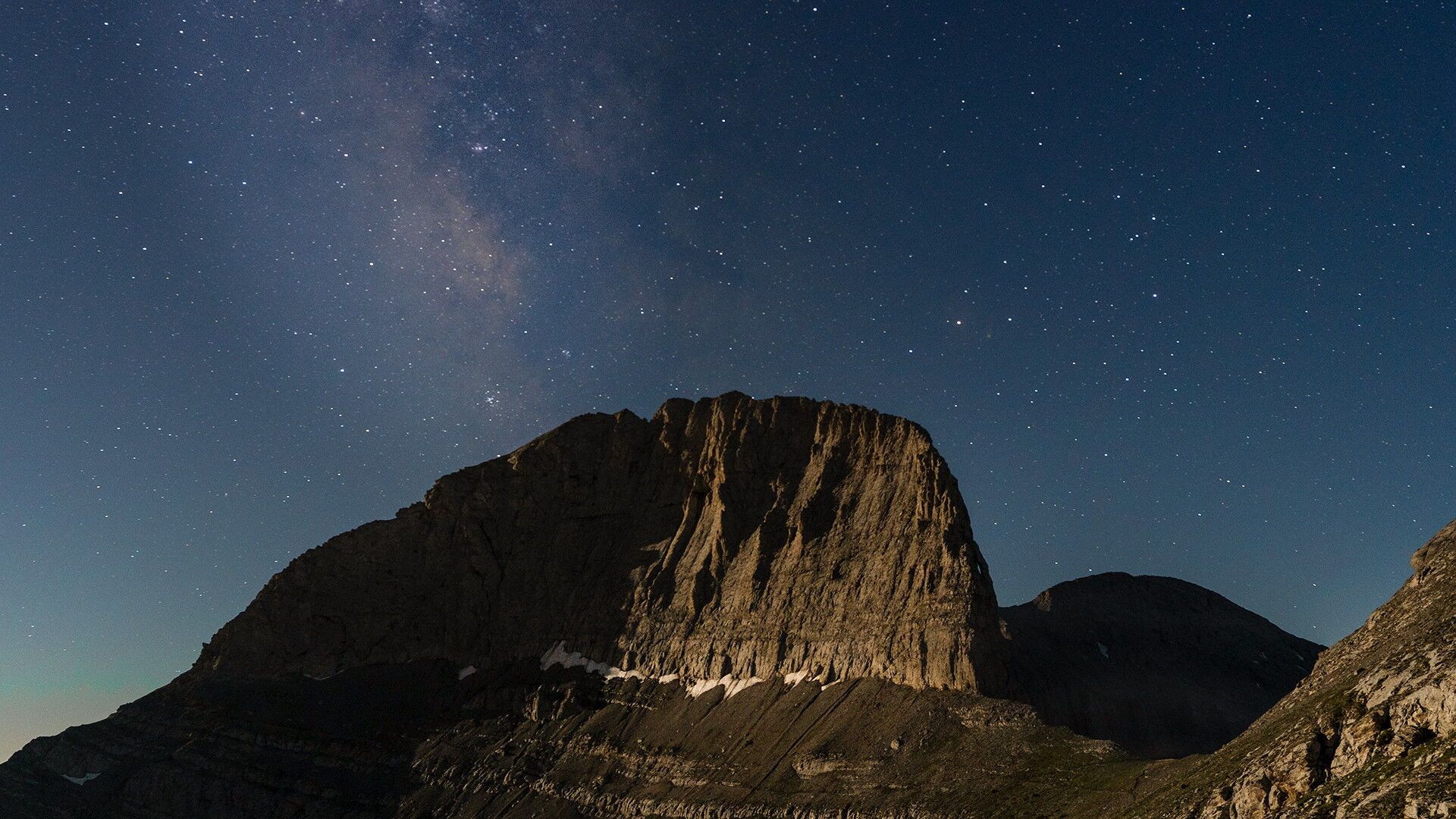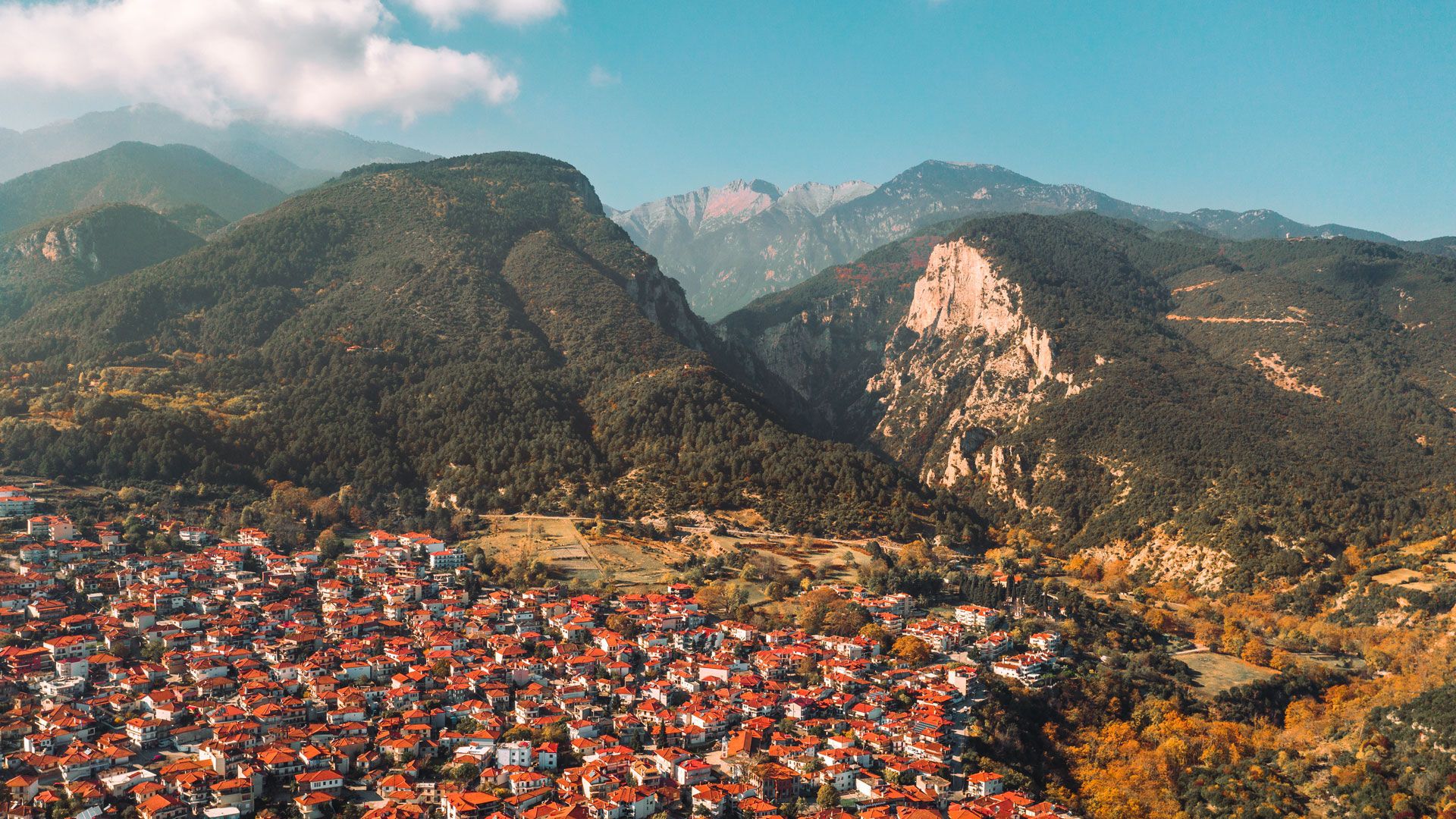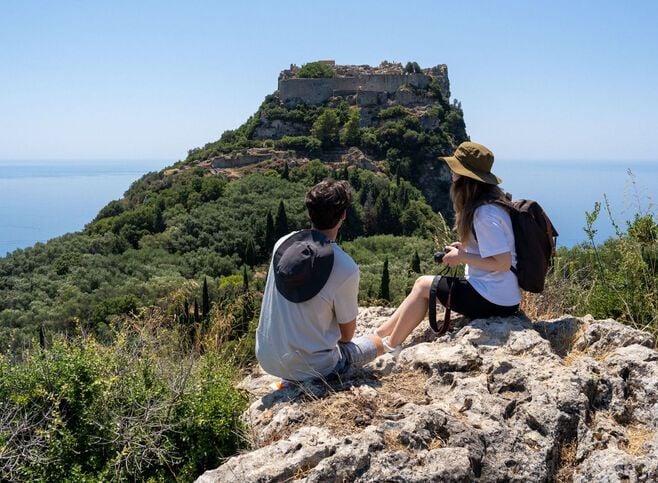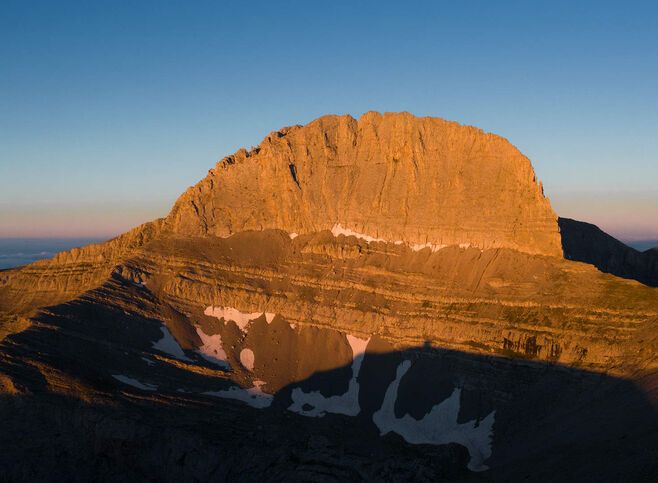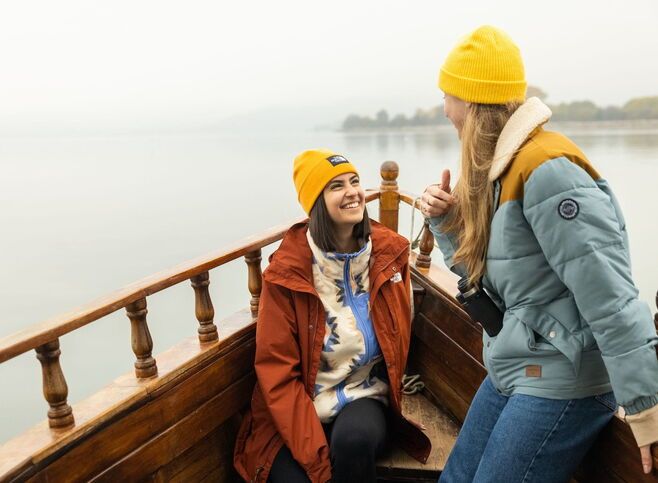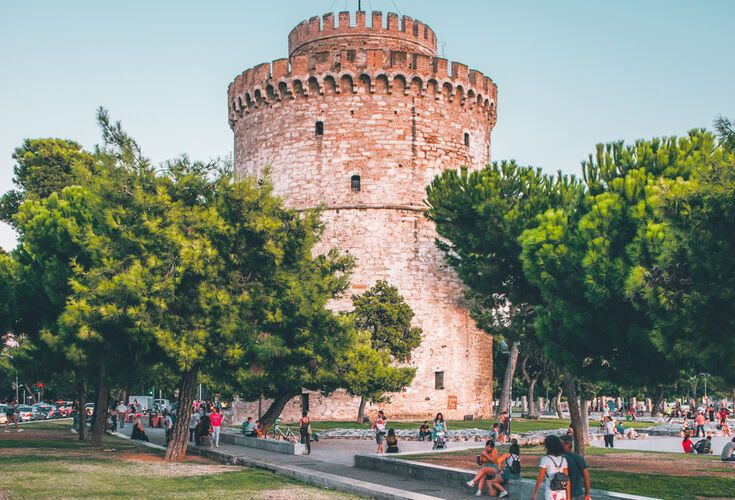- Places to go
- Things to do
- Book your trip
- Get Inspired
- More
- BACK
-
-
Greece’s best-known and tallest mountain, Mount Olympus, is a world in itself. There are so many things to do on your holidays in Olympus, and reaching the summit is just the start: gentle paths, hidden corners, towering trees, wildflowers and unruly rocks, below and above the clouds. You can explore the foothills of Mt Olympus by car or mountain bike and stay in hillside villages packed with authenticity but the greatest rewards will go to the hikers on these awesome peaks.
Only birds (and planes) travel higher than Mytikas, the tallest of Mt Olympus’ peaks. Mytikas and the other slightly lower summits – Skolio, Stefani, Skala and Prophitis Ilias – make up this massive range, often veiled in clouds. But when they part, there is no more dazzling sight than these dramatic natural spires boldly outlined against the deep blue firmament. After all, one of the meanings of the word Mount Olympus has, since Homer’s days, been ‘shining’.
As Homer described the shining palace of the gods of Ancient Greece, “Olympus was not shaken by winds nor ever wet with rain, nor did snow fall upon it, but the air is outspread clear and cloudless, and over it hovered a radiant whiteness.” (Odyssey, VI, 41) This light inspires present-day climbers, too. With the proper equipment (and ideally accompanied by a guide) any reasonably fit person can reach the top, slowly but surely, one step at a time.
Most hikers start the challenge of climbing Mt Olympus at Prionia, 1,100m above sea level. You can come this far by car but from here on, it’s just you and your legs. The E4 European long-distance hiking path passes this way via coastal Litochoro and along the Enipeas Gorge. It’s an average of three hours to the Spilios Agapitos refuge, maybe another three to Mytikas. But you don’t have to do it all in one day. And there are plenty of hiking trails on Mt Olympus for all ages.
You’ll immediately understand why Olympus is Greece’s first and most important national park. Ravines and ridges, gorges and plateaus, deep caves and daunting rocks make impressive snapshots and an epic landscape for canyoning amidst unforgettable nature. Olympus hosts more than 1,500 types of plant (some endemic), dozens of animal species and many rare birds.
One of the most beautiful and least challenging walks on Olympus, the climb along the Enipeas River Gorge is unforgettable. Starting out above Litochoro, you follow the river (crisscrossing wooden bridges as you go) and after about four hours of walking, reach the monastery of Agios Dionysios, which has been there since the mid-15th century. The path climbs from here towards Prionia, from where you can return by car.
Mythology relates that Stefani, the peak shaped like a wreath as its name in Greek implies, was where Zeus sat enthroned. Here in the heady atmosphere and rarified air of Mount Olympus, mythology lives on. At dusk, you can just make out a male profile with a hooked nose and long hair in the fading light. Some say it’s the ruler of the gods himself.
A modern-day marathon has revived the route of the ancient Greeks who, once a year and in honour of their beloved god Zeus, made the journey to the peaks of Mount Olympus. The marathon starts at the archaeological site of Dion, just above sea level, and reaches a height of 2,780m, just below the Throne of Zeus.
Mount Olympus is 100km southwest of Thessaloniki, Greece’s second-largest city. It is Greece’s highest mountain and is situated between the prefectures of Thessaly and Macedonia.
The closest town to Mt Olympus is Litochoro (90.5km or 1hr5min by car from Thessaloniki and 420km or 4hr30min from Athens).
According to ancient Greek mythology, Mt Olympus was the mountain where the 12 gods resided. They supposedly ate ambrosia and drank nectar, which was brought them by doves. Zeus, the king of the Greek gods, is said to have thrown lightning bolts from Mt Olympus and control most natural phenomena.















